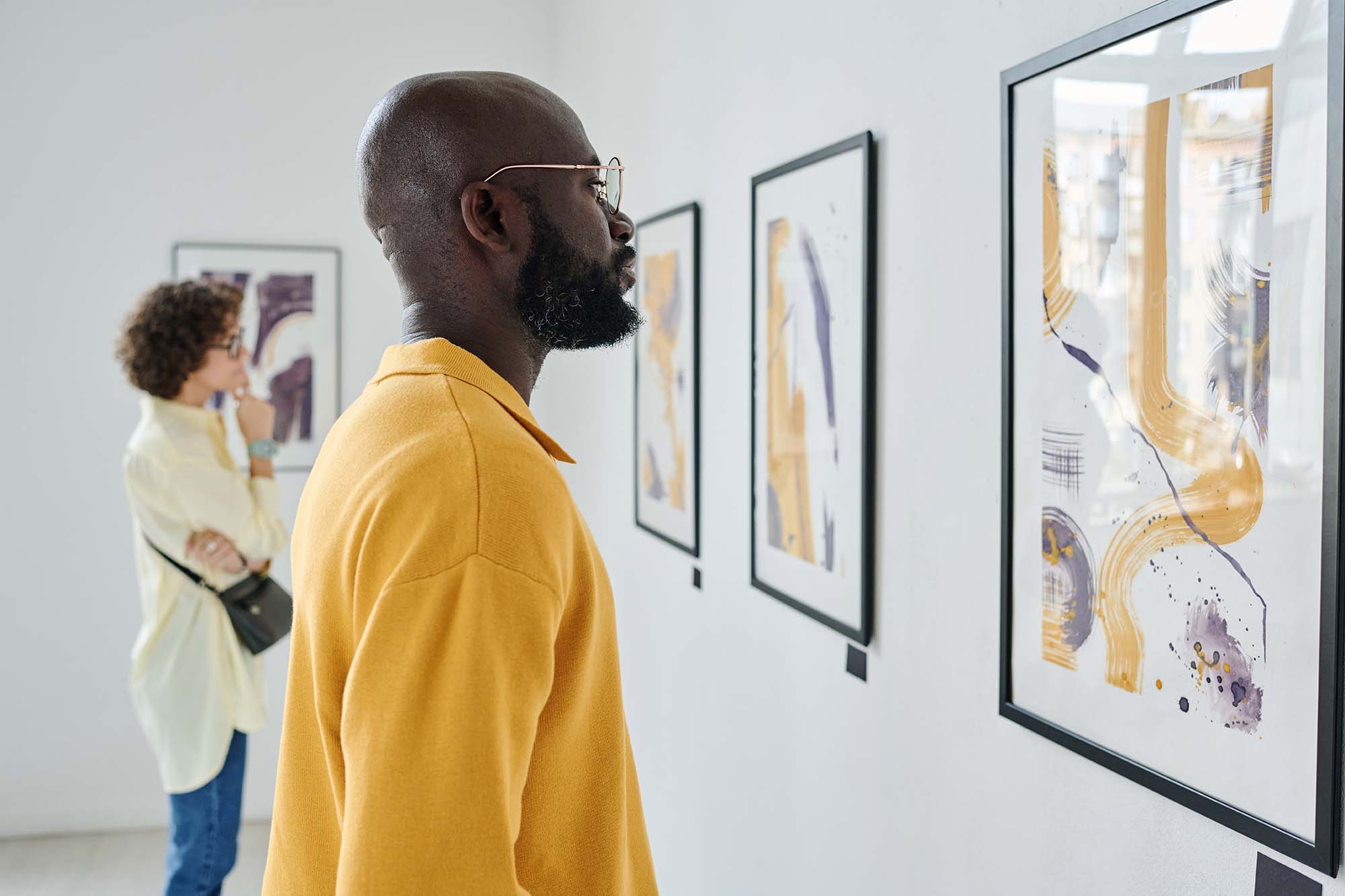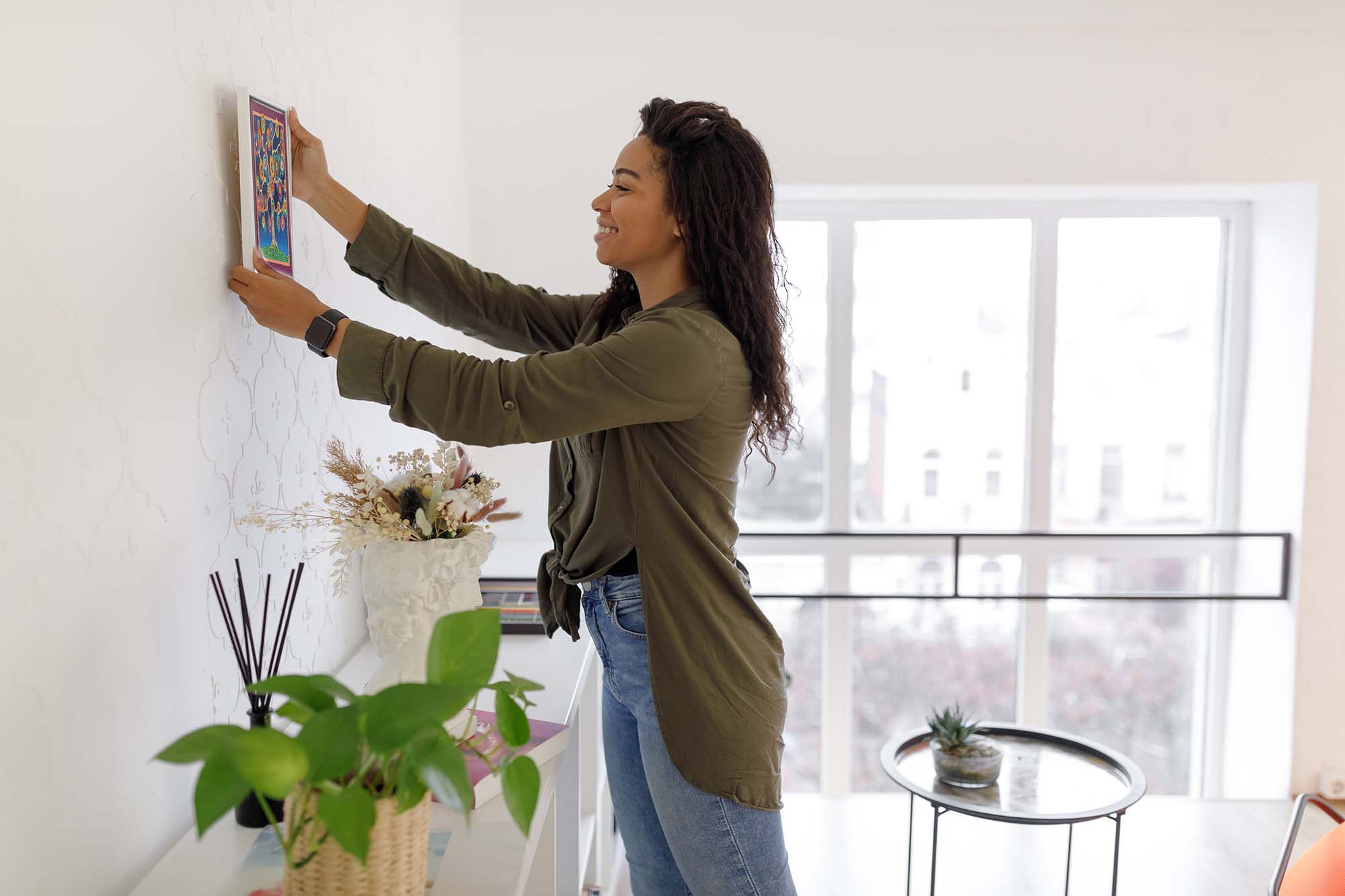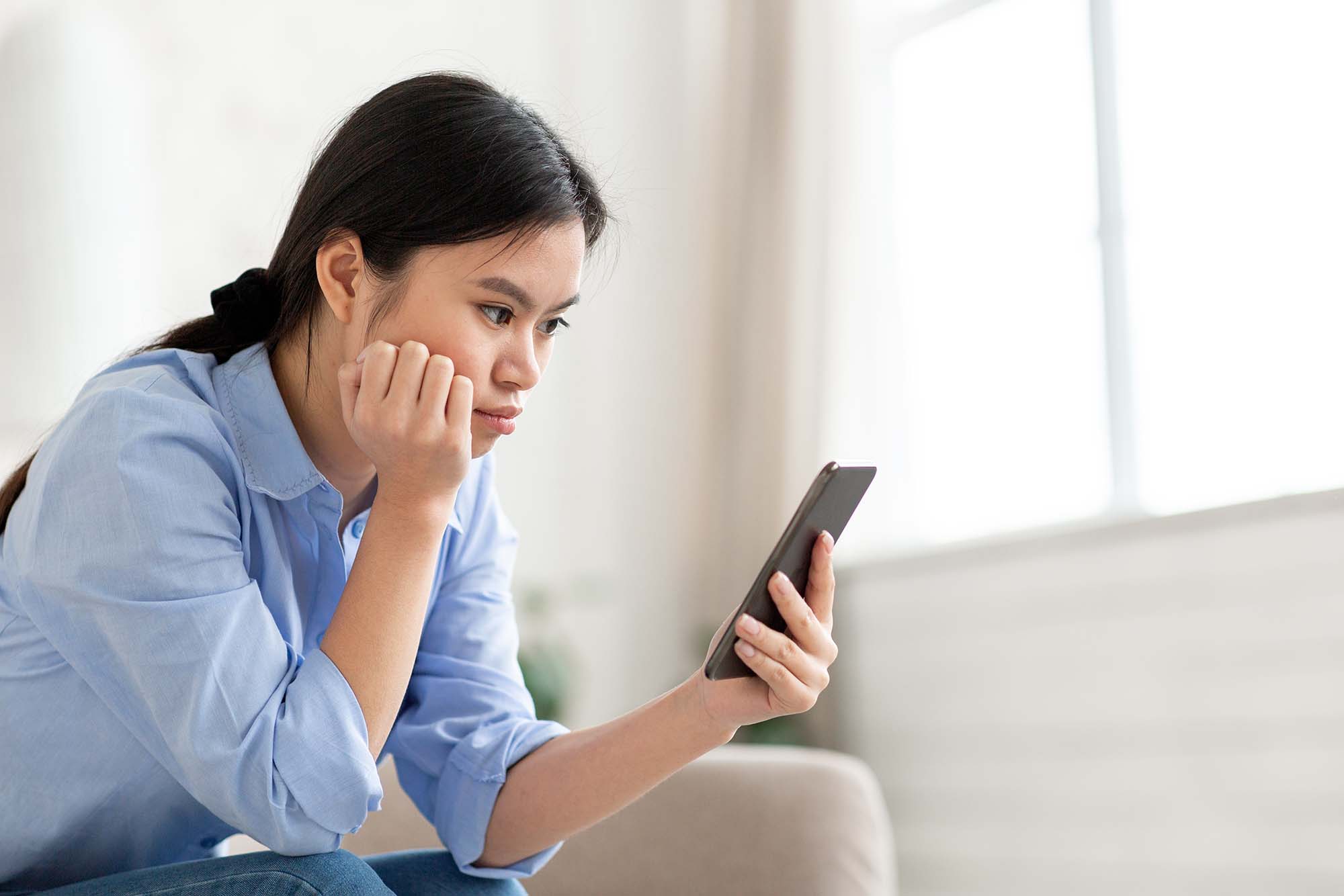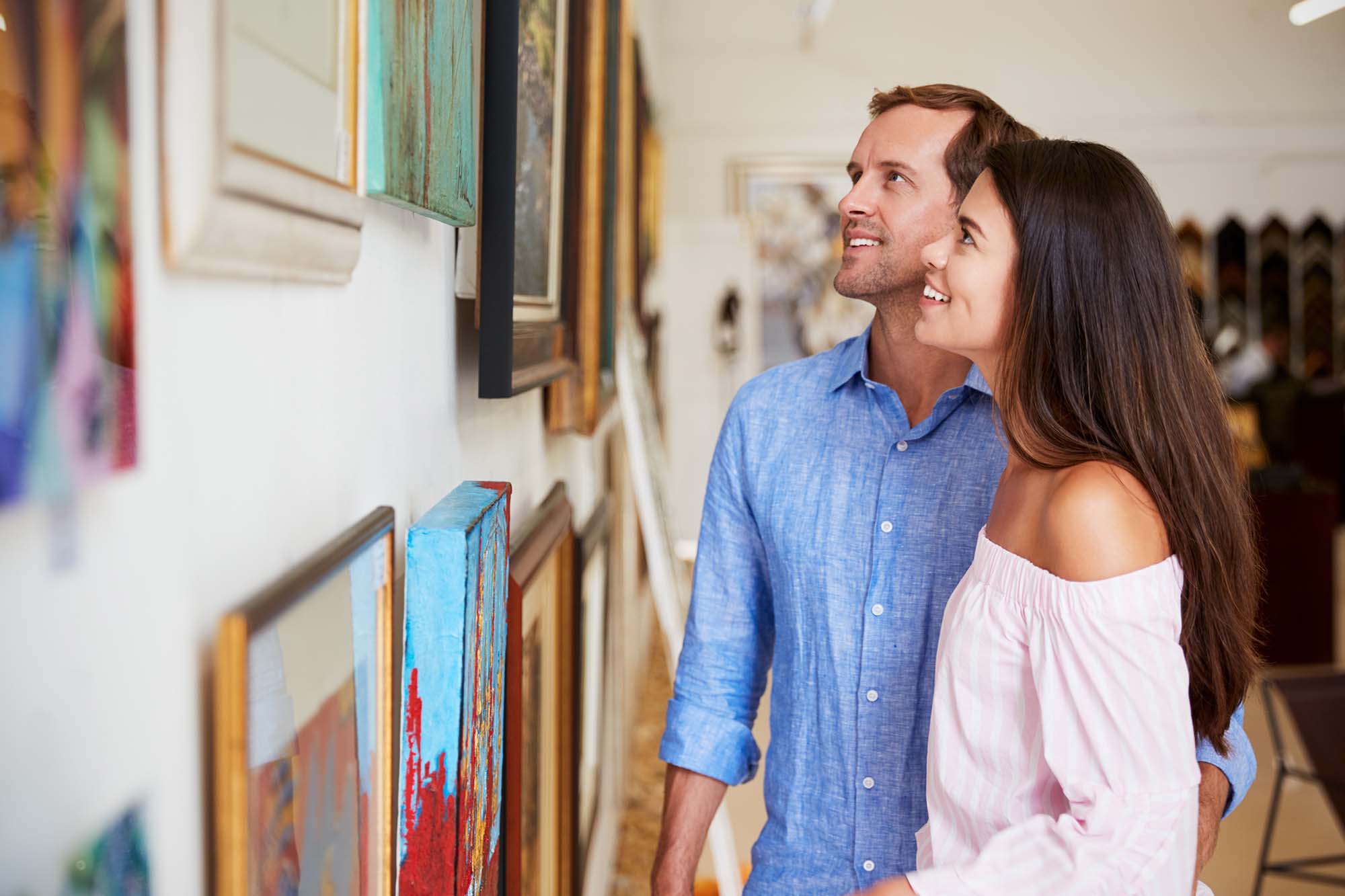The Incredible Power Of Art
Over decades of studies, experiencing art in-person has been associated with measurable positive outcomes in wellbeing and mental health.*
Enjoying, viewing and experiencing art offers a widely-accessible, cost-effective, and non-pharmaceutical means of regulating factors such as mood or anxiety. These benefits can be felt in the home and workplace through the ownership of art.
“Life beats down and crushes the soul, and art reminds you that you have one.” – Stella Adler
*references at bottom of page
Reducing Anxiety and Stress
A research study in Norway examined how art benefits a person’s health. It found that viewing art resulted in reduced rates of anxiety and depression, and higher satisfaction with one’s life.
The study surveyed 50,000 people, concluding that viewing art provided much of the same health benefits as creating it. Simply looking at art can cause increases in dopamine (the ‘pleasure’ hormone), to be released. This helps to reduce stress, and in turn leads to lowered rates of anxiety and depression.

Improve cognitive thought:
The process of finding art you enjoy, and that you wish to collect, can be a process of self-discovery, and also be inspirational.
Art tells a story. A story you have to look for and uncover by yourself, allowing you to get a sense of how you see the world, and where you find beauty and solace.
Original art has had time, skill, storytelling and/or emotion poured into its creation. When you invest in a piece of art, you invest in something that will stir thoughts and emotions in you. The right piece can offer so much more meaning than something simply bought to ‘match the couch’.
In fact, research suggests that engaging with art could improve memory, and is being trialled to help people with Alzheimer’s disease stay connected to their memories.
Human connection
Art is also something that connects us with others. Each brushstroke is a creative expression by the artist, and can act as a window – or gateway, connecting us to the emotions of the artist whilst they created the work.
Art starts conversations: The silent communication that passes from artist – to art – to viewer is a form of subtle connection. The viewer is asked to interpret meaning for themselves, rather than having it spelled out for them with the clarity of words. And thus, admirers may find different emotions and meaning behind the same piece of work.

The benefits of art in the workplace:
Research by the National Arts Program found that people were 17% more productive when they were in a workplace that featured art, compared to a workplace that featured no art.
According to research by the British Council for Offices in 2013, 61% of employees said artwork inspired them to think and work more creatively.
We should not be surprised because art enables positive, cognitive distraction and creates spaces that are both active and connective. It engages staff, helping them to think beyond the four walls that surround them.
Not only can a company’s art collection become a talking point amongst its staff, it is also a visual representation of the company’s values and style. This can easily be understood and absorbed by visitors and prospective clients.
By supporting emerging artists, a company can also act as a patron, supporting the creative economy at a time when it is under increasing strain. Forward-thinking companies can bridge the gap between the corporate and creative worlds.
Of course, buying the right pieces can also act as a future investment for a company, and art is also claimable as a worthy business expense.
‘Little as we know about the way in which we are affected by form, by colour, and light, we do know this: that they have an actual physical effect.” – Florence Nightingale
Can digital art on screens give the same benefits and impact as physical art?
Online and digital technology might offer a solution to further empower the use of the arts in health and wellbeing formats. Today, art viewing, cultural engagements, and trips to art galleries can take place via computers, tablets, smartphones and even virtual reality.
At the same time, a long-running argument in especially art-critical – and more recently – psychological studies, finds that art is best experienced in person, to give its full effect and impact.
Digital formats or other reproductions lose the necessary aspects of immediacy, ambiance, level of engagement or importance. Even the size of an artwork has an effect.
A handful of studies have suggested that art, especially in digital formats, when compared to in-person viewing, may lead to lower ratings of pleasure, interest, approval, time spent viewing, or even positive emotion or arousal. All of which are important for wellbeing benefits.

A constant in a changing world
Over the past few years, there have been many monumental shifts in the art world – and indeed the world in general; How we work, and choose to spend our spare time.
Post-pandemic, many of us are now working from home, and spending more and more time immersed in the digital world. Alongside this, the art world has recently seen the dawning of AI Art and non-physical NFTs.
Numerous studies have concluded time and again that experiencing art in its original physical form, close-up and for long periods give the most positive experience and benefits. And this should be celebrated and encouraged in a world where more and more of our lives are spent viewing pixels on screens.
In regards to buying art, physical art is also one of the most consistent performers for investors to get a return on their investments. This reliability can be shown over decades, despite changes in trends and market turbulence.

Artworks by local artist Alexander Rhys are unique, large, captivating, and help support a local artist and business
Let Lux help you
Please get in touch if you’d like us to help assist you with finding the right artwork for your home or office. We have access to – and knowledge about – a far wider range of artworks than we can hold at the gallery at any one time.
We will be very happy to help source artwork that you can love, and will inspire you – or your colleagues – for years to come.
Please contact us if you wish to know more about mood, colour schemes, branding, investment, or commission/bespoke pieces.
– Written by Owen de Visser
References, research and further reading:
https://www.artthou.co.uk/editorial/art-for-your-home-good-for-your-mental-health
https://nationalartsprogram.org/news/impact-art-workplace
Berlyne, D. E. (1974). Studies in the new experimental aesthetics: Steps toward an objective psychology of aesthetic appreciation. (Oxford, England: Hemisphere).
Berridge, K. C., and Kringelbach, M. L. (2015). Pleasure systems in the brain. Neuron 86, 646–664. doi: 10.1016/j.neuron.2015.02.018
Bonaiuto, P., Biasi, V., and Cordellieri, P. (2002). “Using artistic materials in psychology teaching. Humorous illustrations and film sequences on “Type A” and “Type B” behavioral patterns” in Art and environment. XVII congress of the international association of empirical aesthetics. Proceedings. ed. T. Kato (Takarazuka: Takarazuka University of Arts and Design), 399–402.
Camic, P. M., and Chatterjee, H. J. (2013). Museums and art galleries as partners for public health interventions. Perspect. Public Health 133, 66–71. doi: 10.1177/1757913912468523
Camic, P. M., Tischler, V., and Pearman, C. H. (2014). Viewing and making art together: a multi-session art-gallery-based intervention for people with dementia and their carers. Aging Ment. Health 18, 161–168. doi: 10.1080/13607863.2013.818101
Cela-Conde, C. J., Marty, G., Maestú, F., Ortiz, T., Munar, E., Fernández, A., et al. (2004). Activation of the prefrontal cortex in the human visual aesthetic perception. Proc. Natl. Acad. Sci. U. S. A. 101, 6321–6325. doi: 10.1073/pnas.0401427101
Chatterjee, H., and Noble, G. (2013). Museums, health and wellbeing. (London: Ashgate Publishing), 2013. 158 pages. Curator Mus. J. 57, 513–519. doi: 10.1111/cura.12089
Chatterjee, A., and Vartanian, O. (2016). Neuroscience of aesthetics. Ann. N. Y. Acad. Sci. 1369, 172–194. doi: 10.1111/nyas.13035
Chirumbolo, A., Brizi, A., Mastandrea, S., and Mannetti, L. (2014). ‘Beauty is no quality in things themselves’: epistemic motivation affects implicit preferences for art. PLoS One 9:e110323. doi: 10.1371/journal.pone.0110323
Clow, A., and Fredhoi, C. (2006). Normalisation of salivary cortisol levels and self-report stress by a brief lunchtime visit to an art gallery by London City workers. J. Holistic Healthcare 3, 29–32.
Colbert, S., Cooke, A., Camic, P. M., and Springham, N. (2013). The art-gallery as a resource for recovery for people who have experienced psychosis. Arts Psychother. 40, 250–256. doi: 10.1016/j.aip.2013.03.003
Daykin, N., Byrne, E., Soteriou, T., and O’Connor, S. (2008). The impact of art, design and environment in mental healthcare: a systematic review of the literature. J. R. Soc. Promot. Heal. 128, 85–94. doi: 10.1177/1466424007087806
Di Dio, C., Ardizzi, M., Massaro, D., Di Cesare, G., Gilli, G., Marchetti, A., et al. (2015). Human, nature, dynamism: the effects of content and movement perception on brain activations during the aesthetic judgment of representational paintings. Front. Hum. Neurosci. 9:705. doi: 10.3389/fnhum.2015.00705
Di Dio, C., and Gallese, V. (2009). Neuroaesthetics: a review. Curr. Opin. Neurobiol. 19, 682–687. doi: 10.1016/j.conb.2009.09.001
Eekelaar, C., Camic, P., and Springham, N. (2012). Art galleries, episodic memory and verbal fluency in dementia: an exploratory study. Psychol. Aesthet. Creat. Arts 6, 262–272. doi: 10.1037/a0027499
Freedberg, D., and Gallese, V. (2007). Motion, emotion and empathy in esthetic experience. Trends Cogn. Sci. 11, 197–203. doi: 10.1016/j.tics.2007.02.003
Frijda, N. H. (1988). The laws of emotion. Am. Psychol. 43, 349–358. doi: 10.1037/0003-066X.43.5.349
Gerger, G., and Leder, H. (2015). Titles change the esthetic appreciations of paintings. Front. Hum. Neurosci. 9:464. doi: 10.3389/fnhum.2015.00464
Gerger, G., Leder, H., and Kremer, A. (2014). Context effects on emotional and aesthetic evaluations of artworks and IAPS pictures. Acta Psychol. 151, 174–183. doi: 10.1016/j.actpsy.2014.06.008
Gerger, G., Pelowski, M., and Leder, H. (2018). Empathy, Einfühlung, and aesthetic experience: the effect of emotion contagion on appreciation of representational and abstract art using fEMG and SCR. Cogn. Process. 19, 147–165. doi: 10.1007/s10339-017-0800-2
Harrison, N. R., and Clark, D. P. A. (2016). The observing facet of trait mindfulness predicts frequency of aesthetic experiences evoked by the arts. Mindfulness 7, 971–978. doi: 10.1007/s12671-016-0536-6
Jacobs, R. H., Renken, R., and Cornelissen, F. W. (2012). Neural correlates of visual aesthetics–beauty as the coalescence of stimulus and internal state. PLoS One 7:e31248. doi: 10.1371/journal.pone.0031248
Kawabata, H., and Zeki, S. (2004). Neural correlates of beauty. J. Neurophysiol. 91, 1699–1705. doi: 10.1152/jn.00696.2003
Kirk, U., Skov, M., Hulme, O., Christensen, M. S., and Zeki, S. (2009). Modulation of aesthetic value by semantic context: an fMRI study. NeuroImage 44, 1125–1132. doi: 10.1016/j.neuroimage.2008.10.009
Leder, H., Belke, B., Oeberst, A., and Augustin, D. (2004). A model of aesthetic appreciation and aesthetic judgments. Br. J. Psychol. 95, 489–508. doi: 10.1348/0007126042369811
Leonard, K., Hafford-Letchfield, T., and Couchman, W. (2018). The impact of the arts in social work education: a systematic review. Qual. Soc. Work. 17, 286–304. doi: 10.1177/1473325016662905
Marković, S. (2012). Components of aesthetic experience: aesthetic fascination, aesthetic appraisal, and aesthetic emotion. i-Perception 3, 1–17. doi: 10.1068/i0450aap
Mastandrea, S. (2015). “How emotions shape aesthetic experiences” in The cambridge handbook of the psychology of aesthetics and the arts. eds. P. P. L. Tinio and J. K. Smith (Cambridge: Cambridge University Press), 500–518.
Mastandrea, S., Maricchiolo, F., Carrus, G., Giovannelli, I., Giuliani, V., and Berardi, D. (2018). Visits to figurative art museums may lower blood pressure and stress. Arts Health. doi: 10.1080/17533015.2018.1443953 [EPUB ahead of print]
Mastandrea, S., and Umiltà, M. A. (2016). Futurist art: motion and aesthetics as a function of title. Front. Hum. Neurosci. 10:201. doi: 10.3389/fnhum.2016.00201
Menninghaus, W., Wagner, V., Hanich, J., Wassiliwizky, E., Jacobsen, T., and Koelsch, S. (2017). The distancing-embracing model of the enjoyment of negative emotions in art reception. Behav. Brain Sci. 40:e347. doi: 10.1017/S0140525X17000309
Morse, N., and Chatterjee, H. (2018). Museums, health and wellbeing research: co-developing a new observational method for people with dementia in hospital contexts. Perspect. Public Health 138, 152–159. doi: 10.1177/1757913917737588
Pelowski, M., Markey, P. S., Forster, M., Gerger, G., and Leder, H. (2017). Move me, astonish me … delight my eyes and brain: the Vienna Integrated Model of top-down and bottom-up processes in Art Perception (VIMAP) and corresponding affective, evaluative, and neurophysiological correlates. Phys. Life Rev. 21, 80–125. doi: 10.1016/J.PLREV.2017.02.003
Reber, R., Schwarz, N., and Winkielman, P. (2004). Processing fluency and aesthetic pleasure: is beauty in the perceiver’s processing experience? Personal. Soc. Psychol. Rev. 8, 364–382. doi: 10.1207/s15327957pspr0804_3
Rieger, K. L., and Chernomas, W. M. (2013). Arts-based learning: analysis of the concept for nursing education. Int. J. Nurs. Educ. Scholarsh. 10, 53–62. doi: 10.1515/ijnes-2012-0034
Rieger, K. L., Chernomas, W. M., McMillan, D. E., Morin, F. L., and Demczuk, L. (2016). Effectiveness and experience of arts-based pedagogy among undergraduate nursing students: a mixed methods systematic review. JBI Database System Rev. Implement. Rep. 14, 139–239. doi: 10.11124/JBISRIR-2016-003188
Silvia, P. J. (2005). Emotional responses to art: from collation and arousal to cognition and emotion. Rev. Gen. Psychol. 9, 342–357. doi: 10.1037/1089-2680.9.4.342
Thomson, L. J., Lockyer, B., Camic, P. M., and Chatterjee, H. J. (2018). Effects of a museum-based social prescription intervention on quantitative measures of psychological wellbeing in older adults. Perspect. Public Health 138, 28–38. doi: 10.1177/1757913917737563
Tsukiura, T., and Cabeza, R. (2011). Shared brain activity for aesthetic and moral judgments: implications for the Beauty-is-Good stereotype. Soc. cogn. and Affective Neurosci. 6, 138–148. doi: 10.1093/scan/nsq025
Vartanian, O., and Goel, V. (2004). Neuroanatomical correlates of aesthetic preference for paintings. Neuroreport 15, 893–897. doi: 10.1097/00001756-200404090-00032
Wikström, B.-M. (2011). Works of art as a pedagogical tool: an alternative approach to education. Creat. Nurs. 17, 187–194. doi: 10.1891/1078-4535.17.4.187
Zeki, S., Romaya, J. P., Benincasa, D. M. T., and Atiyah, M. F. (2014). The experience of mathematical beauty and its neural correlates. Front. Hum. Neurosci. 8:68. doi: 10.3389/fnhum.2014.00068







